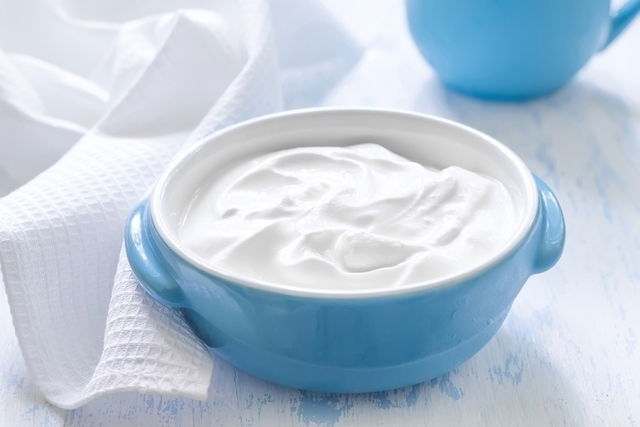A candida diet is aimed at curing a yeast infection more quickly. This can be done by consuming propolis, bearberry tea, mint tea, chamomile tea, and probiotics. You should also increase your intake of healthy fats, which can be found in dish and coconut oil, as well as fresh greens and whole grains. These foods strengthen the immune system and decrease inflammation, which can help to treat fungal infections and prevent new outbreaks.
You should decrease your carbohydrate intake and avoid sweets and alcohol, as these can contribute to yeast cell growth and worsen symptoms like itching and discharge.
To ensure a full and quick recovery, you should following yeast infection treatment as prescribed by your doctor.

Foods to eat
Foods that help to cure a yeast infection strengthen the immune system, boost natural intestinal bacteria and help to control vaginal pH. Some examples include:
1. Probiotics
Probiotic foods, like natural yogurt, kefir and kombucha, are rich in bacteria that promote intestinal health and improve immune system function. They help to decrease the growth of pathogenic microorganisms, which helps to manage candida infections.
Check out the other health benefits of probiotic foods and how to consume them.
Also recommended: Probiotics: 12 Health Benefits, Foods, Supplements (& How to Take) tuasaude.com/en/benefits-of-probiotics2. Propolis
Propolis is made by bees using tree sap, and is considered by a great natural remedy for Candida albicans infections. It is rich in flavonoids, which help to boost immune system function and prevents further yeast cell growth. Propolis can be consumed on a daily basis as a tea or mixed with water and lemon juice.
3. Natural herbs
There are many natural herbs that help to control yeast cell growth and reduce inflammation. Some herbs contain antimicrobial and/or anti-inflammatory action, like mint, chamomile, oregano, thyme, bearberry, rosemary, ginger, cinnamon, star anise, coriander, parsley, basil, onions and garlic. These herbs can be used in meals or taken as a tea or infusion. Check out other yeast infection home remedies that include tea recipes made with these specific herbs.
Also recommended: Sitz Baths for Yeast Infection: 6 Ways to Prepare tuasaude.com/en/sitz-bath-for-yeast-infection4. Healthy fats
Essential fatty acids that are present in fatty fish (like salmon, tuna and mackerel), avocado, olive oil, grape seed oil, chia seeds, flaxseeds and pumpkin seeds help to reduce inflammation and increase immune system activity. These can contribute to a speedier recovery.
According to some studies, coconut oil also contains properties that reduce Candida sp. cell growth, making it a beneficial food to add to your diet when treating a yeast infection.
5. Whole grains
Whole grains contain nutrients, like vitamins and minerals, that help to strengthen the body and increase its defense mechanisms. You can include whole wheat breat, whole grain rice, quinoa, amarynth and oats into you diet to help fight a yeast infection quicker.
6. Fruits and vegetables
It is important to consume all types of vegetables as they are rich in vitamins, minerals, fibers and antioxidants that can help to strengthen the body’s defenses. Examples include broccoli, pumpkin, carrots, spinach, onion and cauliflower.
You should also eat fruit, although you should opt for fruit with naturally less sugar, like blueberries, strawberries, pears, cherries, apples, guava, raspberries, plums, watermelon, melon and papaya.
Also recommended: How to Get Rid of a Yeast Infection: 11 Tips to Try tuasaude.com/en/how-to-get-rid-of-a-yeast-infectionFoods to avoid
The foods you should avoid during yeast infection treatment will typically be high in sugar (as sugar can alter vaginal pH), and processed foods (as they contain preservatives and chemical additives that can worsen your immunity). Examples of foods to avoid include:
- Sugar and sweets in general, like corn syrup, honey, candy, pudding and fruit juice
- Drinks like ready-made smoothies, soda, alcohol and energy drinks
- White flour and fermented foods, like cake, white bread, crackers and biscuits
- Some nuts, like pistachios, walnuts and peanuts
- Some dairy products, particularly those that are rich in lactose, like milk and fresh cheese
- Fried food and processed food, like canned food, salty snacks, chips, frozen food, fast-food and ready-made broths
- Processed meat, like sausage, bacon, prosciutto, cold cuts and mortadella
In addition to these foods, stress, poor sleep, antibiotics, contraceptives, corticosteroids and laxatives and also alter intestinal bacteria or decrease immune system activity and lead to further yeast growth. Check out these home remedies for a yeast infection that you can also use to reduce the spread of infection.
Meal plan for yeast infection
Below is a 3-day meal plan that consists of food that helps to treat a yeast infection:
The food and quantities indicated in this meal plan may vary depending on your age, sex and health history. Therefore, it is important to see a registered dietitian to formulate a meal plan that is adequate for your health needs.
You should follow this type of diet for at least 3 months to ensure efficacy, symptom improvement and further outbreaks. It is best used in conjunction with medical therapy as prescribed by your doctor.
